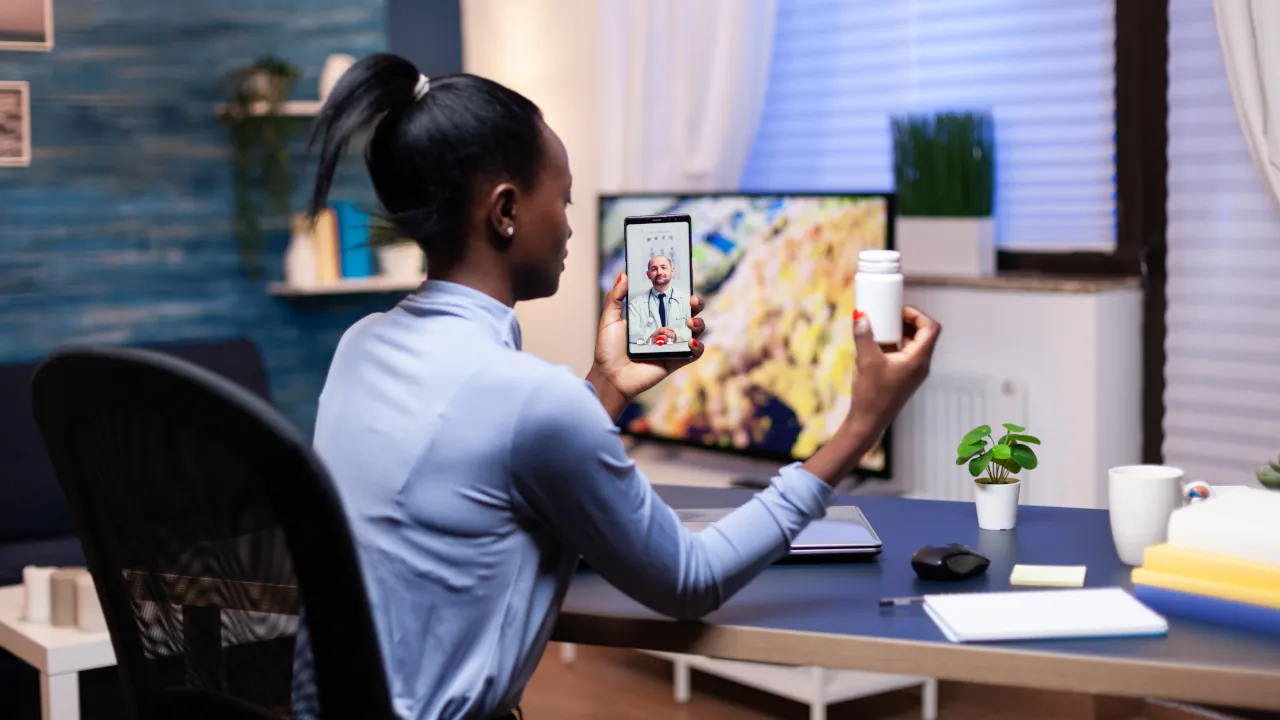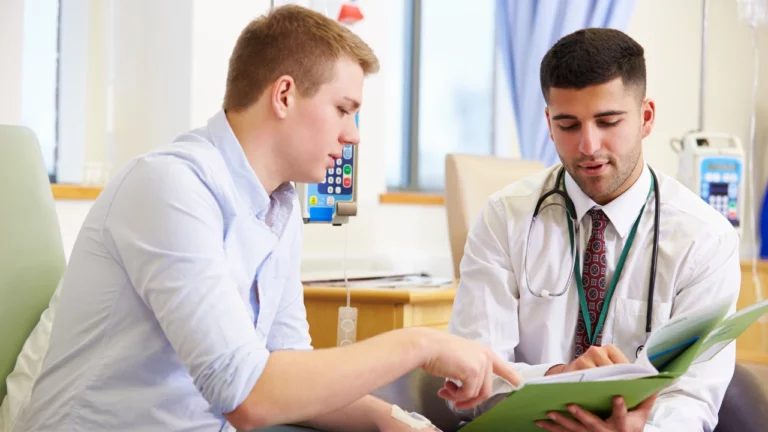The healthcare landscape is undergoing a transformative shift, with remote patient monitoring emerging as a key driver of change. By leveraging technology to track health data outside of traditional hospital settings, RPM is revolutionizing how we deliver care, and chronic care management and empower patients.
As we move through 2024, several exciting trends are poised to shape the future of RPM, impacting both patients and healthcare providers alike.
1. Forecasting Health: The Power of Predictive Analytics
Imagine a world where healthcare professionals can anticipate potential health issues before they even arise. This exciting prospect is becoming a reality thanks to predictive analytics in remote patient monitoring.
What it means:
- Early detection and intervention: Predictive analytics can identify potential health risks at an early stage, allowing for timely intervention and preventive measures. This can significantly improve patient outcomes and potentially avoid serious complications.
- Personalized risk assessment: By analyzing individual patient data, predictive models can generate personalized risk profiles, enabling healthcare providers to tailor preventive strategies and interventions to each patient’s specific needs and vulnerabilities.
- Proactive resource allocation: Predictive analytics can help healthcare systems allocate resources more effectively by identifying patients at high risk of hospitalization or readmission. This allows for proactive support and interventions, potentially reducing healthcare costs and improving overall system efficiency.
2. Personalization Takes Center Stage
Gone are the days of one-size-fits-all treatment plans. The future of healthcare lies in personalized care, and RPM is playing a crucial role in its evolution. By continuously collecting data from individual patients through wearables and other monitoring devices, healthcare providers gain invaluable insights into their unique health patterns and responses to various interventions. This empowers them to tailor treatment plans, medication dosages, and even lifestyle recommendations to each patient’s specific needs and preferences, leading to more effective and targeted care.
What it means:
- Data-driven decision making: Real-time data from RPM allows healthcare providers to make informed decisions about treatment plans based on individual patient responses and progress, rather than relying solely on generalized protocols.
- Improved treatment adherence: Personalized care plans that address individual needs and preferences are more likely to be followed by patients, leading to better health outcomes.
- Empowered patients: Access to their own health data fosters patient engagement and empowers them to take an active role in managing their health.
3. Prioritizing Health Equity
Historically, disparities in access to healthcare technology have exacerbated existing health inequities. However, there’s a growing recognition of the need to prioritize health equity in the implementation of RPM programs. This means ensuring that everyone, regardless of their background, socioeconomic status, or location, has equal access to the benefits of this technology.
What it means:
- Addressing access barriers: Initiatives are being developed to address various barriers to access, such as lack of internet connectivity, affordability of devices, and digital literacy limitations. This may involve providing subsidized devices, offering data plans, and implementing culturally sensitive training programs.
- Reaching underserved communities: Targeted outreach efforts are crucial to ensure that underserved communities are aware of RPM programs and understand their potential benefits. This can involve collaborating with community organizations, faith-based institutions, and local leaders.
- Promoting cultural competency: Healthcare providers need to be culturally competent to effectively communicate with patients from diverse backgrounds and build trust in the remote monitoring process. This involves understanding and respecting patients’ cultural beliefs, values, and communication styles.
4. Uninterrupted Watch: Real-Time Continuous Monitoring
Imagine having a constant, unobtrusive guardian monitoring your health around the clock. This vision is becoming a reality with real-time continuous monitoring in RPM. Advancements in technology now enable the seamless collection of health data at regular intervals, providing healthcare providers with a more comprehensive and up-to-date picture of a patient’s health in real-time.
What it means:
- Early detection of critical events: Continuous monitoring allows for the immediate identification of potential health emergencies, such as sudden changes in vital signs or arrhythmias, enabling prompt intervention and potentially saving lives.
- Improved treatment management: Real-time data insights help healthcare providers adjust treatment plans and medication dosages more effectively based on a patient’s ongoing response and progress.
- Enhanced patient engagement: Continuous monitoring empowers patients to actively participate in their health management by providing them with real-time access to their own data and enabling them to track their progress.
5. One-Stop Care: Centralized Virtual Hubs
The healthcare landscape is evolving towards a more centralized and integrated approach to patient care. In this context, centralized virtual hubs are emerging as a game-changer in RPM. These platforms act as a single point of access, seamlessly combining virtual consultations, remote monitoring capabilities, and data visualization tools, offering patients a one-stop shop for managing their health remotely.
What it means:
- Streamlined care experience: Patients can access various healthcare services, including consultations, data monitoring, and educational resources, through a single platform, eliminating the need to navigate multiple apps or websites.
- Improved communication and collaboration: Centralized hubs facilitate seamless communication between patients, healthcare providers, and other care team members, fostering better collaboration and coordinated care delivery.
- Enhanced data integration and insights: Real-time data from monitoring devices can be integrated with virtual consultations, providing healthcare providers with a holistic view of a patient’s health and enabling them to make more informed decisions.
6. Acceptance of Hospital-at-Home Models
The traditional hospital setting is no longer the only option for patients requiring complex care. Hospital-at-home (HaH) models are gaining traction, offering patients the comfort and familiarity of their own homes while receiving hospital-level care. This shift in care delivery is driven by several factors, including:
- Technological advancements: Remote monitoring tools and telehealth platforms enable continuous monitoring and virtual consultations, ensuring essential medical support is readily available at home.
- Cost-effectiveness: HaH models can significantly reduce healthcare costs compared to traditional hospital stays, benefiting both patients and healthcare systems.
- Improved patient satisfaction: Studies indicate that patients often experience higher satisfaction levels and faster recovery times when receiving care in the comfort of their own homes.
What it means:
- Expanding care options: HaH models offer an alternative to traditional hospital stays for patients with specific conditions who meet eligibility criteria, freeing up hospital beds for critically ill patients.
- Personalized care environment: Patients can receive care in a familiar and comfortable setting, surrounded by loved ones, potentially leading to improved well-being and faster recovery.
- Reduced risk of hospital-acquired infections: HaH models can minimize the risk of exposure to infections commonly encountered in hospital settings.
7. Telehealth & Monitoring: A Synergistic Approach
The future of healthcare lies in synergy, and the convergence of telehealth and RPM exemplifies this perfectly. By combining these powerful tools, healthcare providers can unlock a new level of comprehensive and effective remote care.
What it means:
- Enhanced data-driven decision making: Real-time monitoring data from wearables and other devices provides valuable insights during telehealth consultations, enabling healthcare providers to make more informed decisions about treatment plans and interventions.
- Improved patient engagement and empowerment: Patients actively participate in their care journey by monitoring their own health data and utilizing telehealth platforms to connect with healthcare providers for timely guidance and support.
- Streamlined care delivery: Telehealth consultations seamlessly complement remote monitoring, allowing for efficient follow-up appointments, medication adjustments, and personalized education without the need for frequent in-person visits.
8. Wearables for Specific Needs: Cardiology & Oncology Take the Lead
The realm of wearable technology is rapidly evolving, offering specialized solutions tailored to address the unique needs of various patient populations. In the domain of RPM, cardiology and oncology are at the forefront of this advancement, leveraging wearables to enhance care delivery and patient outcomes.
What it means:
- Cardiovascular monitoring: Wearables equipped with advanced sensors can continuously monitor heart rate, rhythm, and other vital signs, enabling early detection of potential arrhythmias, heart failure, and other cardiovascular events.
- Oncology monitoring: Wearables can track various parameters like fatigue, sleep patterns, and activity levels, helping to identify potential treatment side effects, monitor recovery progress, and improve overall well-being for cancer patients.
- Personalized data insights: Specific wearables cater to different medical conditions, providing targeted data relevant to each patient’s needs, allowing for more informed clinical decision-making and personalized care plans.
9. Protecting Privacy: Cybersecurity and Data Security
As RPM becomes increasingly prevalent, ensuring robust cybersecurity and data security measures becomes paramount. Sensitive patient health data collected through wearables and monitoring devices needs to be protected from unauthorized access, breaches, and misuse.
What it means:
- Compliance with regulations: Healthcare providers must adhere to strict regulations like HIPAA (Health Insurance Portability and Accountability Act) to safeguard patient privacy and data security.
- Implementing robust security protocols: This includes regular software updates, encryption of data at rest and in transit, multi-factor authentication, and secure storage practices to minimize the risk of cyberattacks.
- Educating patients: Patients need to be informed about data privacy practices, potential risks, and their rights regarding their health information.
10. Expanding Virtual Care with Budget Constraints
RPM emerges as a cost-effective solution that can extend the reach of virtual care, even with limited resources.
- Healthcare systems face increasing pressure: Low margins and high expenses pose significant challenges for healthcare leaders. Traditional models often require high overhead costs and resource allocation, impacting financial sustainability.
- Shifting towards value-based care: The focus is shifting towards models that deliver quality outcomes at lower costs. Virtual care and RPM have proven to be cost-effective solutions, demonstrating their potential to:
- Reduce unnecessary emergency department visits: Proactive monitoring and timely interventions through RPM can prevent complications and avoid unnecessary ER trips, saving on associated costs.
- Increase bed capacity during surges: By enabling remote care for suitable patients, hospitals can free up beds for critically ill patients requiring in-person care, optimizing bed utilization during surges.
- Improve clinical decision-making: Real-time data from RPM empowers healthcare providers with valuable insights, leading to more informed decisions and potentially reducing unnecessary procedures or tests.
- Reduce the burden on the healthcare system: By promoting preventive care and early intervention, virtual care and RPM can contribute to a healthier population, ultimately reducing the overall burden on the healthcare system.
What is means:
- Conduct cost-benefit analyses: Clearly demonstrate the financial advantages of RPM compared to traditional in-person visits. Quantify potential cost savings in areas like reduced hospital admissions, travel expenses, and administrative work.
- Advocate for funding initiatives: Lobby for government grants, private insurance coverage, or internal budget allocations to support the implementation and ongoing maintenance of RPM programs.
- Prioritize cost-effective solutions: Explore various RPM options and choose solutions that offer reasonable pricing models, considering factors like subscription fees, device costs, and data storage charges.
- Focus on high-risk patients: Strategically target RPM programs towards patients with chronic conditions or those at high risk of complications, where the potential cost savings and improved outcomes are likely to be most significant.
DrKumo: Leading the Charge in the Remote Patient Monitoring Trends
With the transformative wave of remote patient monitoring (RPM) sweeping across healthcare, DrKumo is positioned to be a key player in shaping its future. As we’ve seen in the top 10 trends outlined above, the industry is moving towards personalized care, AI-powered insights, expanded applications, and seamless data integration.
DrKumo understands the challenges doctors face in today’s healthcare landscape. Managing chronic conditions, preventing readmissions, and delivering personalized care can be demanding, especially with limited resources. That’s where DrKumo’s innovative RPM solutions come in.
We empower healthcare providers to:
- Gain deeper insights: Our AI-powered platform analyzes patient data from wearables and other sources, providing actionable insights into their health status. Identify potential risks early, personalize treatment plans, and optimize interventions for better outcomes.
- Improve patient engagement: Our user-friendly platform keeps patients connected and motivated. Track progress, deliver educational resources, and encourage self-management, leading to better adherence and improved health outcomes.
- Reduce costs and readmissions: Proactive monitoring with DrKumo helps prevent complications and unnecessary hospital visits, leading to cost savings for both patients and healthcare systems.
- Expand your reach: Offer convenient and accessible care to patients who may have difficulty visiting your practice regularly, especially those in rural areas or facing mobility challenges.
Here’s why DrKumo is the perfect partner for doctors:
- Scalable solutions: We offer customizable solutions to meet the specific needs of your practice, regardless of size or specialization.
- Data-driven approach: We leverage data and analytics to provide evidence-based insights and support informed decision-making.
- Expert support: Our dedicated team of healthcare professionals provides ongoing support and training to ensure successful implementation and optimal outcomes.
Ready to learn how DrKumo can transform your practice and empower your patients? Contact us today for a personalized consultation and discover how DrKumo can help you deliver exceptional care.








